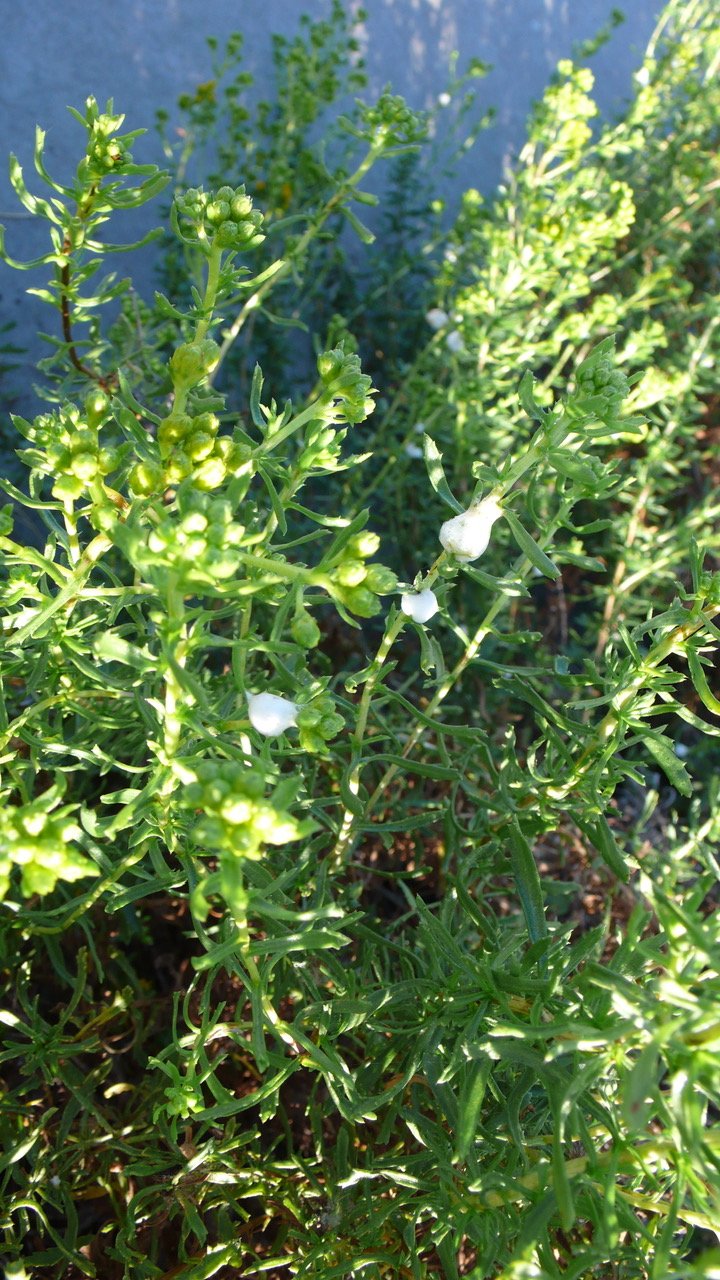Spittle Bugs
Will Bowen, PhD
If you have been walking in the canyon lately you might have noticed what looks like gobs of spit on some of the plants along the trail. It’s not really spit, but rather a foamy bug hideout created by the nymph or larva of a local leaf hopper insect that goes by the Latin name of Clastoptera bruennei.
Here in the first week of September there are quite a few spittle bug hideouts on the plants of the canyon. Most of them are on a fragrant sticky yellow-flowered shrub known as Happlopappus squarosus, commonly called Saw-toothed Goldenbush or Saw-toothed Bristlebush.
Most of our local spittle bugs choose to live on the Happlopappus plant, but you can also find a few bugs living on sagebrush, broom baccharis, or wand chicory.
Although there are many types of spittle bugs in the world, the ones that you find locally are all tiny brown and yellow creatures of the Clastoptera species. They are unique in that it seems like two different bugs were cut in half and spliced together.
The front half of our six-legged Clastoptera nymph is shiny dark brown and looks quite beetlish but the back half is a soft billowy yellow, reminding one of the Pillsbury Dough Boy or the Goodyear tire icon. At the back end of the yellow half there is an orifice and a rotating appendage that exudes the white foam or spittle that the bug calls home. To make the spittle, the larva first pierces the plant, sucks up some sap, transforms it internally, and then exudes it as bubbly white foam from the rear orifice, with the help of the circularly rotating appendage.
If you are brave enough, you can push the foamy spittle aside with your fingers and find the nymph (sometimes two or three even!) hiding inside. They are very tiny and quite odd. Very quickly they will try to return to the cover of their spittle.
The spittle of the leaf hopper nymph is a very effective adaptation. It serves as a hiding spot — they can’t be seen by birds or lizards, and it tastes bad--if something does see them and tries to take a bite. The spittle also serves as insulation against the heat of the day and the cold of night, and it provides moisture in dry climates.
The eggs that hatched to become the leaf hopper nymph were already on the plant, laid last year by the leaf hopper adult. At some point they hatched, grew into a nymph, and began to make spittle. Although the leaf hopper nymph does bite the plant and suck some sap up it does not kill or badly injure its host and so it is not something we need to worry about.
At a certain point the spittle bug nymph will mature into a yellow and beige mottled leaf hopper insect with strange body angles--something like those of a Stealth bomber. It will be able to hop distances many times its body length.
Next time you are on the trail and spot some spittle, stop and take a closer look. If you are too aghast to use your fingers, find a small twig to push apart the foam. You might be quite surprised at what you find.
Spittle bug on Happlopappus squareosus

